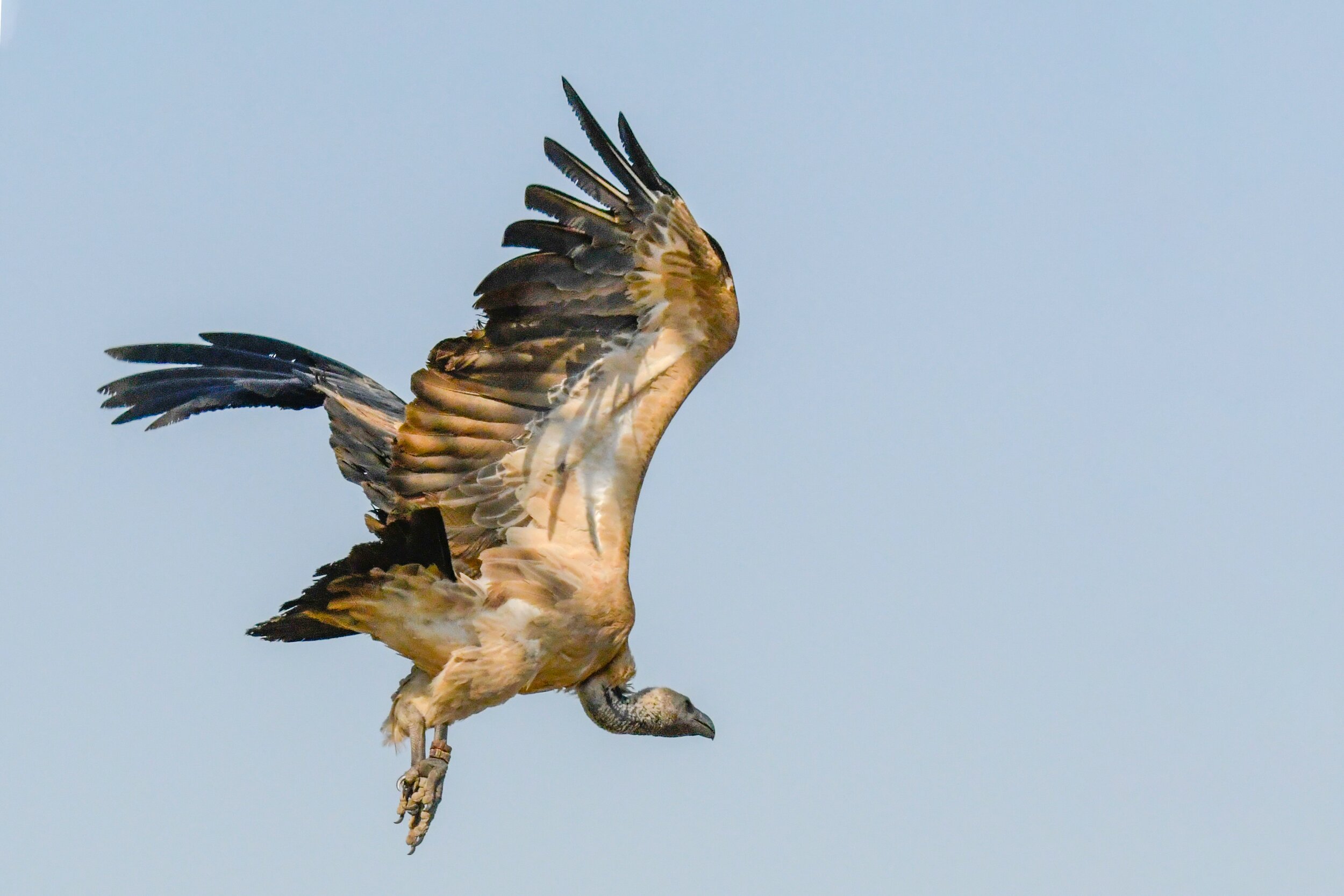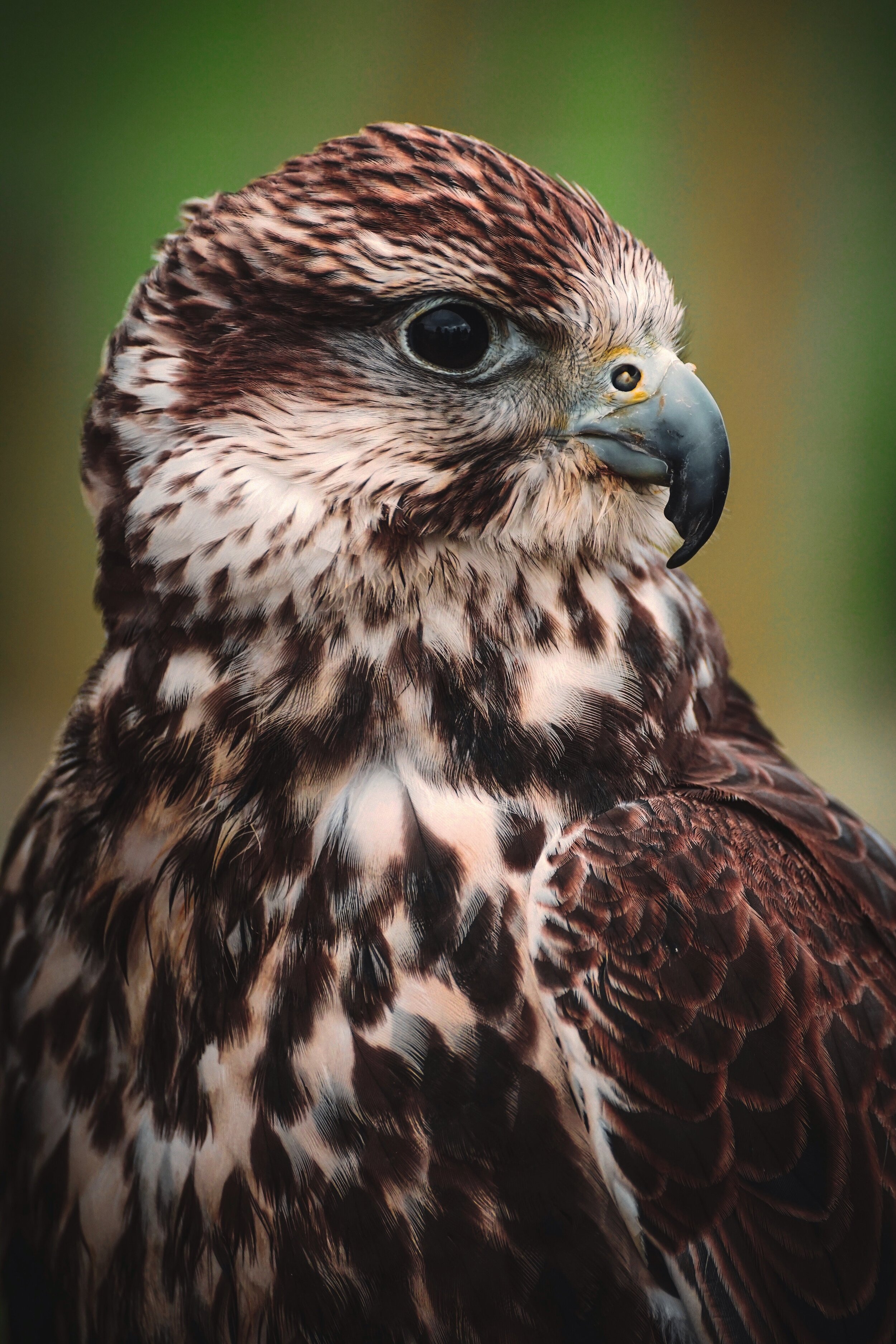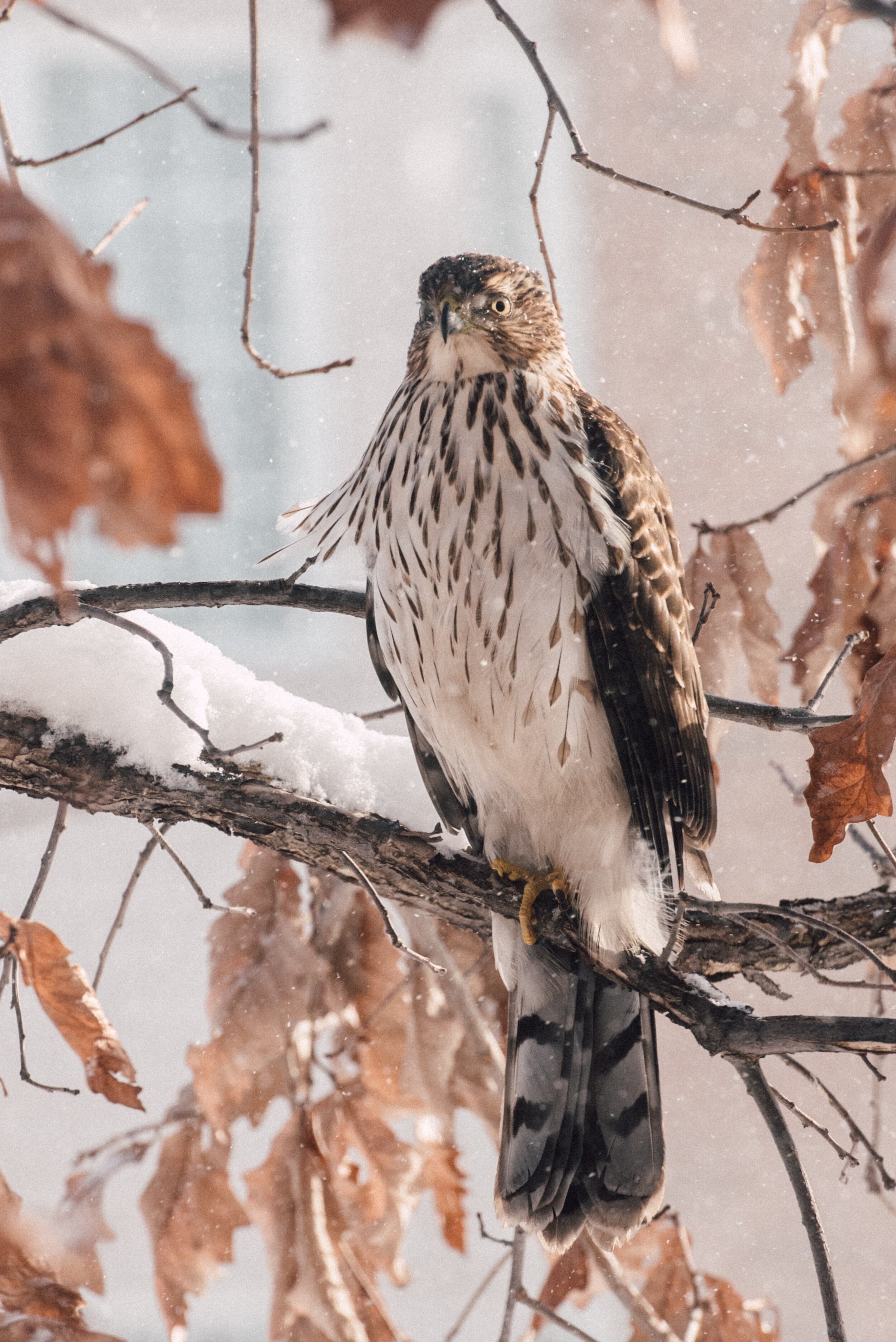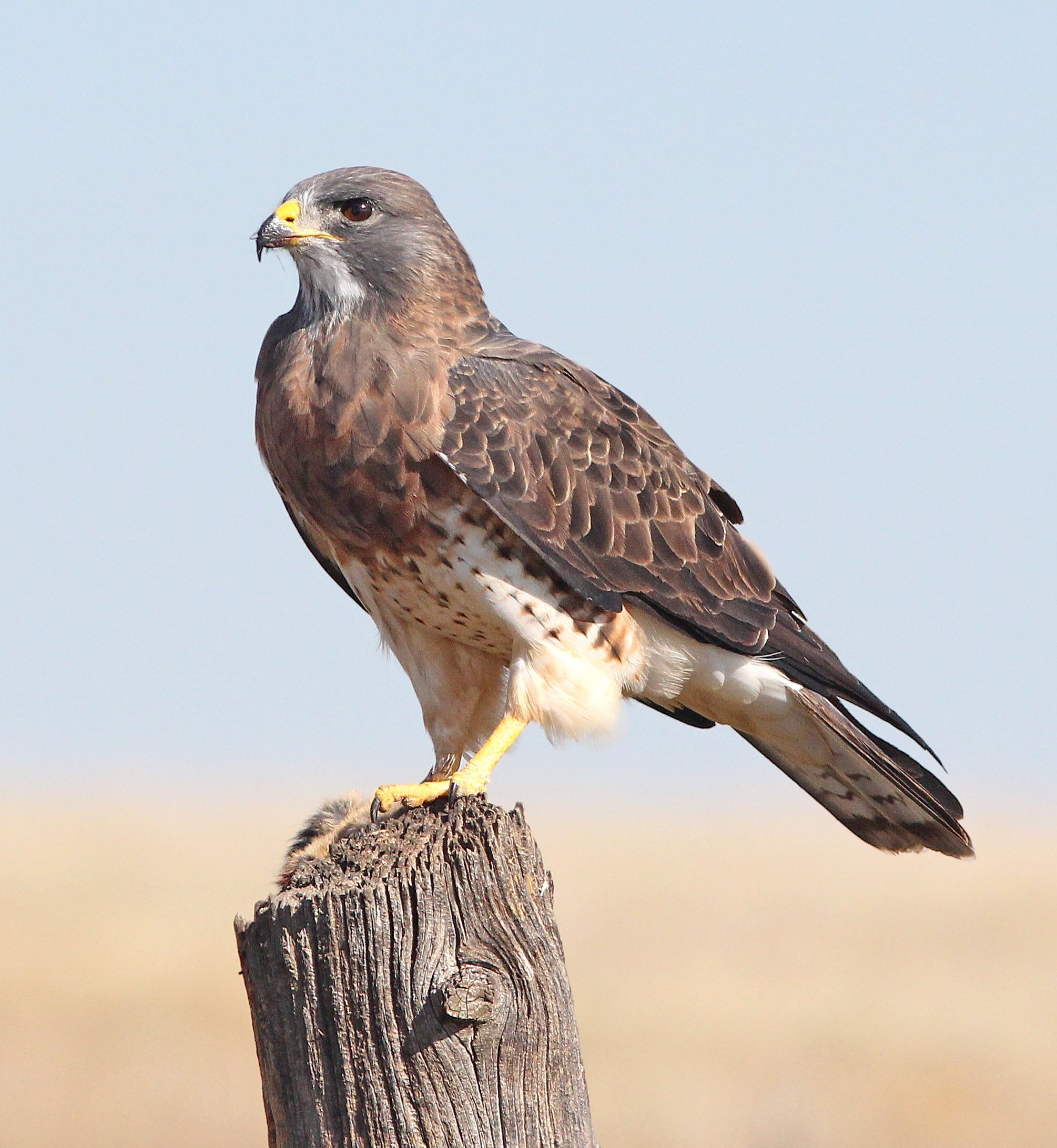Palos Verdes Estates is Home to Birds of Prey by Russell Caterson
Palos Verdes Estates is Home to birds of prey
by Russell Caterson
Palos Verdes Estates is home to many bird species. Song birds that sing and delight us. And the majestic peacock, a species introduced by Frank A. Vanderlip, Sr. when he accepted a gift of 12 birds, has become a mascot for the city. Peacocks on the hill are not hard to find, since they hang-out on public roadways and in the yards of residents. But in the trees and bushes, on hillsides, in the canyons and along the coast there are at least 300 bird species on the peninsula. Quite a collection of permanent resident and migratory land birds, sea birds, fresh water birds and raptor birds of prey.
There are two native species of falcons; American Kestrel and Peregrine. Two types of owls, Barn and Great Horned. And four kinds of hawks; Red-tailed, Red-shouldered, Coopers and Osprey (A.K.A. Seahawks). Seasonally Sharp-shinned hawks and Merlin falcon fly here to enjoy our warmer climate.
American Kestrel Falcon is a small dainty falcon. They perch openly on wires, antennas and tree tops. Usually hunt in an energy conserving way perched to scan the ground for prey and sometimes hovers in the air. They eat grass hoppers and other insects, lizards, mice and small birds. The Kestral voice is a high killy killy killy killy series of sounds. Typically found in most open and lightly wooded lowlands and urban areas.
Merlin Falcon is a similar small falcon with a powerful build, also known as a pigeon hawk. They are swift flyers and skilled hunters. They eat mostly birds by catching them in midair during high speed attacks, going after abundant local species. Merlin are not very vocal, but give a deeper sounding series of killy, like a Kestrel. Found in open agricultural areas with scattered trees, wooden parks and residential areas in the coastal lowlands.
Peregrine Falcon is a heavy, fairly short-tailed falcon usually calm and reserved but will fiercely defend their nest. They are amazingly fast and powerful in flight. They dive at speeds of 200 miles per hour when hunting for food. Dives at that speed are used to attack larger birds, like ducks. It has a special projection on the upper mandible called the tomial tooth and can use it to snip the spinal cord for an instant kill. This is used when an air attack or fall to earth does not kill its prey. Peregrine call is a harsh ray ray series and softer ee-chup. It will hunt over estuaries, wetlands, open fields and waterfront because this falcon requires space to hunt. They prefer to hunt for medium sized birds, ranging from pigeons, seabirds, doves and ducks, by descending on them in a rapid dive and hitting them with large, powerful feet. And will perch on bare limbs, cliff faces, in urban areas tall trees and bridges.
Red-tailed Hawk is bulky and broad winged, adult birds have a broad reddish-orange tail. It is not aggressive and generally will flee instead of defending its nest. When flying this hawk soars and conserves energy by flapping its wings as little as possible, but sometime hovers by beating them. It can fly into the wind to “kite” or stay stationary above the ground. Usually it travels 20 to 40 miles per hour but can reach speeds as high as 120 miles per hour when it dives. Typical call is a harsh, drawn-out scream and can give shorter, clipped notes. The Red-tailed hawk hunts primarily from an elevated perch, it swoops down to grab prey. It has a diet of small rodents, birds and reptiles. This large hawk can be found in all habitats including heavily urbanized areas.
Red-shouldered Hawk is a medium-sized hawk, with broad, rounded wings and medium-length tails that they fan out when soaring. In flight, they often glide or soar with their wingtips pushed slightly forward, imparting a distinctive, “reaching” posture. This hawk can be vocal with low, repeated down-slurred kee-oo, kee-oo calls. It hunts in woodlands and streams to feed on retiles, frogs, crayfish, rodents and birds. Fairly common resident in residential areas, valleys, foothills and local coastal lowlands.
Cooper’s Hawk is a medium-sized hawk that appears long-necked in flight and has been described as looking like a "flying cross". It flys with quick, consecutive wing beats and a short glide, though they may also soar. An insistent clucking, kek-kek-kek-kek-kek, is heard mainly in their breeding areas. These birds capture prey from cover or while flying quickly through dense vegetation, relying almost totally on surprise. They mainly go after small to midsized birds, also the raptor American kestrel and other smaller raptors. They will eat chipmunks, hares, mice, squirrels, bats and also rob nests. Even more rarely, they may prey on lizards, frogs or snakes. Normally it uses its feet to catch prey and kills it by repeatedly squeezing and holding it away from its body until it dies. They have also been seen holding prey underwater until it stops moving. They also hunt songbirds at backyard feeders, perching nearby then swooping down and scattering the birds to single one out in flight. They may pursue prey on the ground by half running and half flying. These hawks are forest and woodland birds, but our leafy suburbs seem nearly as good. A regular sight in parks, quiet neighborhoods, over fields, at backyard feeders, and even along busy streets if there are trees around.
Osprey (Sea Hawk) is a large fish-eating hawk with a small slightly crested head. It flies like a gull with wings angled and drooped slightly forward. It has a shrill, decreasing pitch whistles are especially heard when birds interact. Their diet consists almost exclusively of fish. Osprey carry their fish prey head first in their talons; toes and footpads are covered with spike-like projections that increases the hold on prey. Also, the osprey outer toe is reversible, allowing them to grasp their prey with two toes in front and two behind. The osprey tolerates a wide variety of habitats, nesting in any location near a body of water providing an adequate food supply.
Sharp-shinned Hawk is a small, long-tailed hawk with short, rounded wings. Very similar to Cooper's Hawk, but has quicker, snappier wingbeats. One of the most common backyard hawks and the smallest hawk in the United States. Usually silent, it does give a series of kew notes. It is a daring, acrobatic flier that navigates wooded homes at top speed going after songbirds and mice. A common migrant and winter visitor, they are wide spread in woodlands, chaparral, suburban areas and mountain areas and are found in more wooded areas than Cooper’s.
Great Horned Owl (Tiger owl & Hoot owl) is a large and extremely adaptable owl with a vast range throughout the Americas. The name is derived from the large ear tuffs that look like horns. It has superlative vision and hearing. They use excellent binocular vision and stereo hearing to see and hear at night to locate prey. The head can turn 270 degrees, since the owl cannot move its eyes. And, like the osprey, the outer toe is reversible. This owl has rhythmic hooting, which is higher pitched for females; hoo-HOO, HOO-HOO. Its primary diet is rabbits, hares, rats and mice; although it freely hunts any animal it can overtake. It eats just about everything. It shares similar habitat with the red-tailed hawk, so competition may occur between the diurnal hawk and the nocturnal owl at twilight. It is found in nearly all habitats that can provide suitable nest sites in residential areas, and large urban parks, on cliff ledges, in tree trunks and old nests.
Barn Owl is a medium sized owl adapt for hunting animals on the ground and nearly all of their food consists of small mammals which they locate by sound, their hearing being very acute. This owl does not hoot, but utters an eerie, drawn-out shriek called a rasping screech. The face is characteristically heart-shaped and is white in most subspecies. Fairly common in suburbs throughout the lowlands and foothills. It is active at night when it hunts for prey typically with long coursing flights and sits quietly during the day in trees and within structures, like old barns and outbuildings.
Russell Caterson - Long Time Palos Verdes Resident







